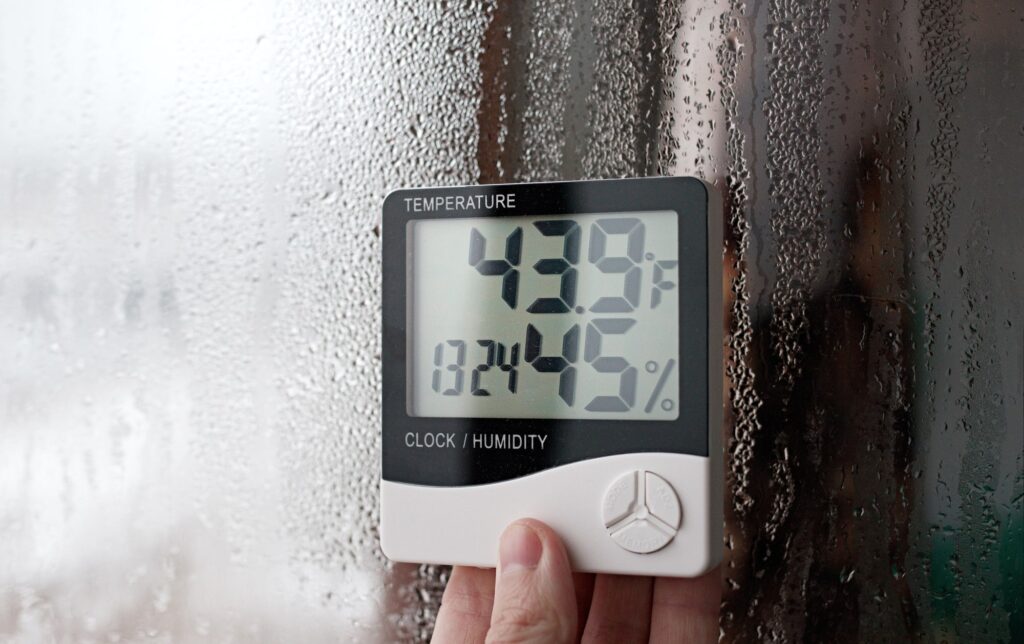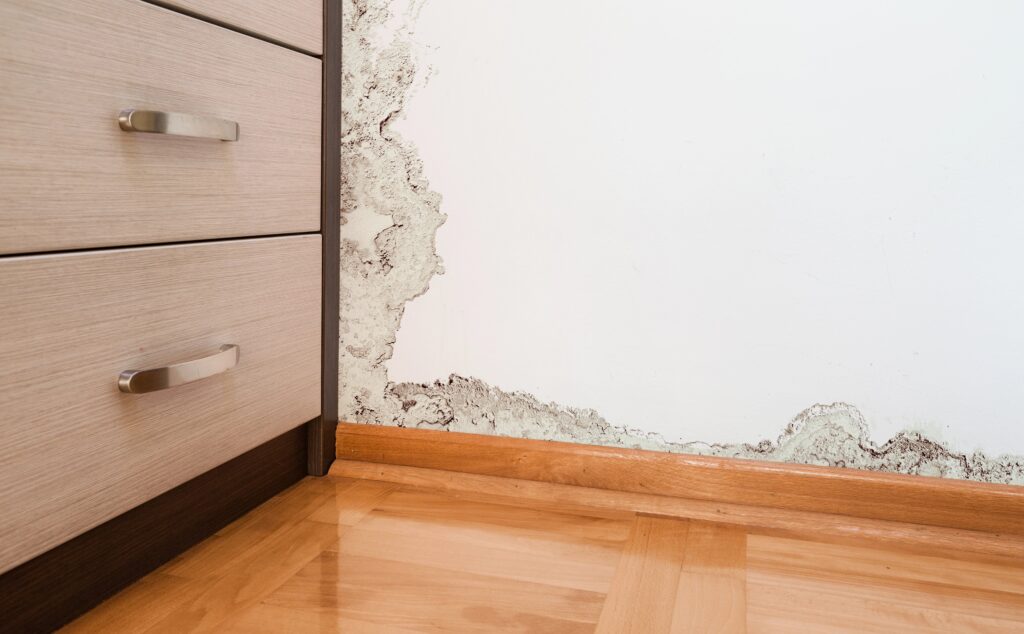To maintain a healthy and comfortable home, it’s essential to keep an eye on the humidity levels inside. The ideal humidity level for your house should be between 30% and 50%. Staying within this range can help prevent issues like mold growth, dust mites, and other problems that can affect your health and home.
When humidity levels are too high, the air in your home can feel sticky and uncomfortable. Excess moisture can damage walls, ceilings, and furnishings. Conversely, low humidity can lead to dry skin and respiratory issues. Finding the right balance is key to creating a pleasant environment.
In this article, we’ll explore why humidity matters, how to measure it, and tips to maintain optimal levels in your home. Understanding humidity can greatly enhance your living experience and protect your space.
What Is the Significance of Indoor Humidity Levels?
Indoor humidity levels greatly influence your home environment. Correct humidity can enhance comfort and health, while incorrect levels can lead to various issues. Understanding these concepts is key to maintaining a pleasant living space.
Understanding The Basics Of Humidity Levels Of Indoor Spaces
Humidity refers to the amount of moisture in the air. In your house, the ideal indoor relative humidity typically falls between 30% and 50%. This range helps keep your home comfortable and reduces the chances of mold growth, ensuring good indoor air quality.
When humidity levels in the house drop below 30%, you may notice dry air, causing discomfort and potential damage to wooden furniture. Conversely, levels above 50% can lead to excess moisture, promoting mold and mildew.
You can monitor humidity using a hygrometer. If you find it’s too low, consider using a humidifier to achieve a comfortable humidity level. For high levels, a dehumidifier can help manage the indoor environment effectively, keeping your house at a comfortable level.
Health Impacts Of Incorrect Indoor Humidity Levels
Incorrect humidity levels can directly impact your health. Low humidity can cause dry skin, irritated eyes, and even respiratory issues. Newborns are especially sensitive and may require more moisture in the air for comfort.
On the other hand, high humidity can create an ideal environment for allergens like dust mites and mold. These can worsen asthma and allergy symptoms, affecting the indoor air quality.
It’s essential to maintain proper levels not just for comfort, but also for your overall well-being. Regularly checking humidity can help you adjust your home environment to stay healthy and comfortable year-round.
How To Determine The Ideal Indoor Humidity Level For Your Home

Finding the right humidity level in your home is essential for comfort, health, and home maintenance. You will need to consider various factors that affect humidity, the ideal levels for different seasons, and the tools available to measure and monitor humidity effectively.
Factors Affecting Indoor Humidity
Many factors can impact the humidity level in your house. Season, weather, and geographical location play significant roles. For example, winter months usually bring lower humidity due to cold air holding less moisture. In contrast, summer often leads to higher humidity levels.
Your home’s construction, such as insulation and ventilation, also affects humidity. Poorly sealed windows and doors may let outside air in, changing indoor levels. Activities like cooking, showering, and drying clothes add moisture, raising the indoor humidity level.
Finally, the number of plants in your home can influence humidity. Plants release moisture into the air, which can increase the relative humidity level. Assess these factors to determine how they impact your home’s humidity levels.
Recommended Ideal Indoor Humidity Levels For Different Seasons
Maintaining the correct humidity range varies across seasons. Generally, the best humidity level in your home should be between 30% and 50%.
- Winter Months: Aim for the lower end of this scale, around 30% to 40%. Cold air outside can lead to dryness indoors, which may cause respiratory issues.
- Spring and Fall: These seasons often have moderate levels, so keeping between 40% to 50% works well for comfort.
- Summer: The humidity level for your house should ideally be around 40% to 60% to manage the higher moisture in the air.
Adjust accordingly based on your comfort and specific weather conditions.
Tools To Measure And Monitor Indoor Humidity
To effectively monitor humidity levels in your home, use a hygrometer. This simple device can provide immediate readings and help you make necessary adjustments.
- Digital Hygrometers: Offer precise measurements and often include features like temperature readings. They are easy to read and can be placed in various rooms for accurate monitoring.
- Analog HygrometersTraditional devices that require no batteries to monitor humidity in the house. They are generally less precise but can still give a decent estimate of humidity levels.
Also, consider using a dehumidifier or humidifier if your levels are consistently too high or low to maintain home comfort. These devices can help maintain the optimal humidity levels, ensuring comfort and protecting your home from moisture issues.
What Are The Consequences Of High Indoor Humidity?

High indoor humidity can lead to serious health issues and damage your home. It’s important to understand how excessive moisture affects you and your living space.
Effects of High Humidity On Health
When humidity is too high, it can affect your respiratory system. High humidity levels create a perfect environment for mold and dust mites to thrive. Breathing in these allergens can cause symptoms like sneezing, coughing, and even asthma attacks.
You might also notice an increase in skin irritations or discomfort. When the air in your home is moist, sweat doesn’t evaporate efficiently. This can make you feel more uncomfortable and lead to overheating.
Furthermore, increased indoor humidity can also promote the spread of viruses. Since moisture helps pathogens stay airborne, your chances of getting sick might rise with high or too low humidity in the house. Keeping humidity at safe levels is vital for your health.
Damage Caused By Excessive Indoor Humidity To Your Home
Excess humidity can damage various areas of your home. Condensation often forms on windows and walls, which can lead to mold growth. Mold not only poses health risks but can also affect the structural integrity of your home.
Additionally, high humidity can cause wood to warp and rot. This humidity issue is common in wooden structures, furniture, and flooring. Once wood absorbs too much moisture, it can suffer severe damage, requiring costly repairs.
Excessive moisture can also lead to unpleasant odors. A musty smell signals mold growth or mildew, which can give your home an unwelcoming atmosphere. Keeping humidity levels controlled is essential in maintaining both your health and the condition of your home.
How Can You Control And Maintain The Ideal Humidity Level In Your Home?
Maintaining the right humidity level in your home is essential for comfort and health. You’ll need to use certain tools and strategies to achieve this. Below are some effective methods to control humidity levels throughout your home.
Tips For Achieving The Optimal Humidity Level In Your Home
To keep your home comfortable, you should monitor humidity levels regularly. A humidity chart can help you find the best range, which is typically between 30% and 50%. Here are some tips:
- Ventilation: Open windows and use exhaust fans to improve air circulation. This helps reduce dampness.
- Seal Leaks: Check for drafts around windows and doors. Sealing these can prevent excess moisture from entering.
- Indoor Plants: Some plants can increase humidity. Research which types work best for your home.
Keeping an eye on your home’s humidity levels will help you maintain a healthy indoor environment.
Using Humidifiers And Dehumidifiers Effectively
Humidifiers add moisture to the air, while dehumidifiers remove it. Both are effective humidity control solutions.
- Choose the Right Size: Make sure your humidifier or dehumidifier is appropriate for the size of your room. A small unit won’t effectively change humidity in a large space.
- Set Timers: Use built-in timers or smart settings to manage the humidity in your home. This can help maintain your desired levels without constant adjustments.
- Regular Maintenance: Clean these devices often. Dust and mold can build up, affecting their performance and health.
Using these devices properly can help you achieve ideal indoor humidity levels.
Best Practices For Humidity Control In Different Rooms
Different rooms have unique needs when it comes to humidity. Here’s how to adjust the humidity for various spaces:
- Bathrooms: Use exhaust fans to remove excess moisture after showers. A dehumidifier can also help in especially damp areas.
- Kitchens: Keep cooking areas well-ventilated. Open windows or use exhaust fans to minimize moisture from cooking.
- Basements: Install a dehumidifier if humidity levels are high. This keeps mold at bay and maintains a healthier atmosphere.
By following these practices, you can effectively control humidity levels in each room, making your home a healthier space.
FAQs About Ideal Home Humidity Level
What is the healthiest humidity level for a home?
The healthiest indoor humidity level for a home typically ranges between 30% and 50%. Maintaining this range helps ensure comfort, reduce the risk of mold growth, and protect your home’s structural integrity. Humidity below 30% can cause dry skin and respiratory issues, while higher humidity levels can lead to condensation, mold, and damage to building materials.
What indoor humidity is too high?
Indoor humidity levels above 60% are generally considered too high. When humidity exceeds this threshold, it can create an environment conducive to mold growth, dust mites, and other allergens. Additionally, high humidity can lead to dampness in walls, floors, and ceilings, potentially causing structural damage over time.
Is 65% humidity too high in a house?
Yes, 65% humidity is generally considered too high for a house. While it’s not excessively high, it is above the recommended range of 30% to 50% for normal humidity. At 65%, you may start to experience discomfort, and the risk of mold growth increases. It’s advisable to take steps to reduce humidity, such as using a dehumidifier or improving ventilation.
Is 70% humidity too high for a house?
Yes, 70% humidity is too high for a house. This level of humidity can lead to several problems, including mold growth, condensation on windows, and potential damage to your home’s structure and furnishings. High humidity can also make the indoor environment feel sticky and uncomfortable. It’s important to reduce humidity levels to avoid these issues, aiming to maintain levels between 30% and 50%.
What humidity does mold grow in?
Mold typically begins to grow in environments where the humidity level is above 60%. To prevent mold, it’s important to keep indoor humidity levels below this threshold. Mold spores are always present in the air, but they require moisture to grow and spread, which is why controlling humidity is key to preventing mold infestations.
Does AC reduce humidity?
Yes, air conditioning (AC) can help reduce humidity levels in your home. As an AC unit cools the air, it also removes moisture through the process of condensation. This dehumidifying effect helps maintain a more comfortable and healthier indoor environment. However, in extremely humid climates, additional dehumidification may be necessary to keep humidity levels within the ideal range.

